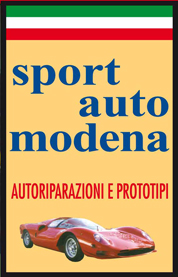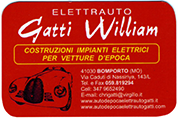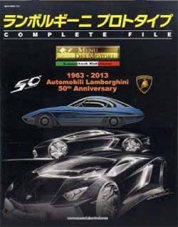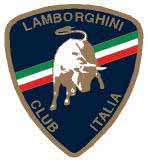An evolution of power, aerodynamics and style, for a dream Ducati which is even more competitive and powerful
AMA technical regulations allow fewer modifications to the engine than the international Superbike regulations so Ducati, which returned to the AMA championship this year, has produced an engine with technical characteristics that are much closer to those of the racing version. It has redesigned the 999R to meet these very special requirements, and upgraded its flagship model to make it even more powerful, effective and competitive.
The new 999R is yet another step in Ducati tradition, which has always been characterised by the manufacture of series production bikes similar to their race versions not only in styling, but also in technical features.



The engine
Project features
The basic dimensions of the Testastretta engine used on the new 999R remain the same as those of the previous version. The cylinder bore is thus still 104 mm and the stroke stays at 58.8 mm, for a total displacement of 999 cc. However, the maximum power and torque have been greatly increased. Compared to the previous model's 102 kW (139 hp) at 10000 rpm, the new engine produces 110 kW (150 hp) at 9750 rpm. The torque itself has been increased from 108 Nm (11 kgm) at 8000 rpm, to 116.7 Nm (11.9 kgm) at 8000 rpm.
In order to fully understand what these figures mean for the new 999R, it is instructive to take a look at the variation in MEP (Mean Effective Pressure). This value is an important parameter in rating the engine, and measures the work the engine is capable of doing throughout a complete cycle (i.e. through all four phases). The Testastretta engine of the 999R ‘04 has a MEP at maximum torque of 13.6 bar. The new model, on the other hand, exceeds 14 bar, a limit which no series production Ducati engine has ever reached before. At maximum power, the MEP value for the 999R model year 2004 Testastretta engine is 12.3 bar, while on the MY ‘05, at the same power output, the value increases to 13.5 bar. It is clear that in the two cases under consideration, the volumetric and thermodynamic performance of the new engine (in other words, its capacity to take in and burn the fuel/air mixture) are significantly improved, thanks to the substantial technical upgrades to the cylinder assemblies.
In this context, it is worth noting that the air flow rate in the intake ducts (permeability) has been increased by 22.8% (!), while the exhaust duct flow rate has increased by 5.8%. The overall optimisation of the engine is confirmed by the fact that the improved maximum power value is now achieved at an engine speed which is lower by 250 rpm than the corresponding speed of the Testastretta engine mounted on the previous 999R model.
The engine speed limiter is set to 11000 rpm.



New cylinder assemblies
In order to improve performance, the cylinder heads and pistons have been completely redesigned and should really be regarded as completely new components, designed specifically for racing. The pistons are forged and constructed from an aluminium alloy with high mechanical specifications to ensure outstanding geometrical stability during the wide thermal excursions to which they are subject. The variation of the geometrical specification, as well as the new shape of the combustion cavity in the head, has resulted in a compression ratio of 12.45 +/- 0.5 :1 (slightly greater than that of the previous R version of the Testastretta engine, which was rated at 12.3:1).
The valve seats are deeper due to the increased valve lifts. The heads have undergone a radical fluid-dynamics redesign. In order to make it possible to use larger diameter valves, their centre distances have been increased which means that the routing and dimensions of the intake and exhaust ducts have also had to be modified.
Still in comparison to the previous 999R Testastretta, the squish surfaces have been increased to improve the turbulent flow in the combustion chamber, resulting in significantly increased combustion efficiency. To summarise, the improvements to the new 999R engine’s cylinders have greatly increased the engine's ability to "breathe" as well as its combustion output. The result of these modifications is evident from the significant improvements in overall performance of the road version, which means with absolutely standard exhaust system, silencer and intake system. The engine also meets established emissions standards. It should be noted that metal gaskets are not used between the head and cylinder of each assembly, but rather special seal rings (called Wills seals) around the perimeter of the combustion chamber. The large cylinder bore makes this necessary if a perfect seal is to be achieved. The overall redesign of the cylinder head has also made it necessary to respecify the cooling ducts. The valve covers are now in magnesium for lower weight.
Timing belts
To limit the temperature of the timing belts and not only to keep down the overall weight of the vehicle, Ducati's competition bikes have never been fitted with protective timing belt covers. However these units are necessary to protect the belts when the bike runs onto the gravel at the side of the track, and this year the Ducati R&D department has installed timing belt covers with dynamic cooling on the 999R, as already done on the 749R. The horizontal cylinder timing belt cover has an intake with a small sponge filter which attaches to the front fairing. The air is taken in at this point, circulates in the timing belt housing and exits via a NACA opening in the top of the vertical cylinder timing system cover.
The engine speed and phase timing wheel
A new element is the timing wheel on the timing drive shaft gear which, along with an magnetic induction sensor, generates the signal used by the ECU to detect the engine speed and operational phase. The timing gear teeth are not used, as on previous Testastretta engines, but instead the system uses a timing wheel with bumps machined onto the outer circumference of the gear face itself. This results in a cleaner electrical signal from the induction sensor.
Engine casings and low sump
The engine casings are sand-cast, to highlight the exclusivity of the product. The dimensions of the units are no different from those used on the previous 999R Testastretta engine. The studbolts which mount the cylinder assemblies are located in such a way as to make it possible to mount such large bore cylinders (104 mm). The lubrication circuit retains the "low sump", a fundamental feature of race engines, as this allows the oil pump to always draw the lubricant in all vehicle positions (e.g. bike cranked over, under harsh acceleration or with the front wheel in the air).
Crankshaft
The components in the engine casing of the Testastretta mounted on the new model 999R have not undergone significant modification compared to those used in the previous version, with the exception of the crankshaft. This component now has a new configuration. It is almost completely machined, to optimise its form. It has thus been possible to obtain a weight reduction while maintaining a perfectly balanced crank layout. The lubrication ducts inside the crank pin are also completely new: they no longer run horizontally, but diagonally while directly communicating with the duct along the two main journals. In this way it has been possible to reduce (from three to one) the number of plugs required to close off the surface borings necessary for machining the ducts themselves. The conrod manufactured by Pankl is in titanium to reduce the weight of the crank linkages.

















 History of "Menu dei Motori"
History of "Menu dei Motori"

 DESIGN PROJECT
DESIGN PROJECT UNIVERSITA' DI MODENA
UNIVERSITA' DI MODENA








Comments
Nessun commento presente
Add Comment